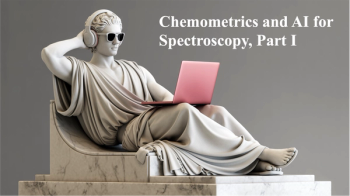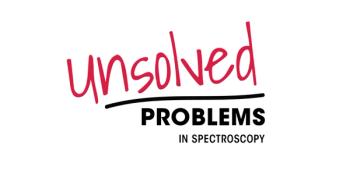
- Special Issues-09-01-2016
- Volume 31
- Issue 9
Library-Based Screening of Pharmaceutical Materials by Handheld Raman and Near-Infrared Spectrometers
The availability of quality drugs is crucial in the event of a pandemic. Here, we report our pilot efforts to perform rapid screening of anti-infective drugs for confirmation of drug product quality using near infrared and Raman library methods. The methods reported are nondestructive towards the sample and are designed to facilitate rapid physical testing of drugs at the point of use or in a field setting. We built a representative library through voluntary collaboration with six different manufacturers of antibiotic and antiviral drugs. The drugs supplied by these manufacturers are representative of imported U.S. FDA approved finished products. We successfully transferred the spectral libraries from laboratory-based instruments to field-deployable handheld near infrared and Raman instruments and challenged the library methods using independent samples from different batches.
The availability of quality drugs is crucial in the event of a pandemic. Here, we report our pilot efforts to perform rapid screening of anti-infective drugs for confirmation of drug product quality using near-infrared (NIR) and Raman library methods. The methods reported are nondestructive toward the sample and are designed to facilitate rapid physical testing of drugs at the point of use or in a field setting. We built a representative library through voluntary collaboration with six manufacturers of antibiotic and antiviral drugs. The drugs supplied by these manufacturers are representative of imported United States Food and Drug Administration (FDA) approved finished products. We successfully transferred the spectral libraries from laboratory-based instruments to field-deployable handheld NIR and Raman instruments and challenged the library methods using independent samples from different batches.
Anti-infective medicines such as antibacterial and antiviral drugs play an important role during a pandemic outbreak (1). In an effort to promote nondestructive screening of anti-infective drugs, the United States Food and Drug Administration (FDA) Division of Pharmaceutical Analysis (DPA) has developed spectral library–based approaches (2,3) for confirmation of drug product quality on portable spectrometers. Spectral libraries can be used to screen counterfeit products by comparing them against spectral signatures of authentic finished drug products (4–6). In this article, we report our attempt to screen common anti-infective drugs, such as those that would be used during an emergency situation like a global pandemic, using spectral libraries built and transferred from laboratory-based instruments to handheld near-infrared (NIR) and Raman spectrometers. The methods developed are easy to use by nonexperts and provide the opportunity to screen materials based on pass–fail determinations (7). Typically, these techniques are fast and deliver results in less than 60 s, thereby streamlining the process of performing analysis on finished drug products (6). In addition, these nondestructive approaches require no sample preparation and can analyze a sample directly through a transparent container or blister packaging (8–13).
Methods
A list of antibacterial and antiviral drugs used to build the master library is provided in Table I. A total of 150 finished drug product samples (including different batches and dosage strengths) from six generic drug manufacturers were included in the study. The samples were received on a voluntary basis directly from the manufacturers. The laboratory NIR spectrometer used to build the library was an Antaris II Fourier transform NIR spectrometer (Thermo Fisher Scientific). Spectral collection for the library entries was performed using the integrating sphere assembly at 4000–10,000 cm-1 at 8 cm-1 resolution and a gain of 1×. Each spectrum collected consisted of 32 scans. The laboratory Raman spectrometer used to build the library was a Kaiser Raman Workstation 785 nm (Kaiser Optical Systems Inc.). The Raman 3-mm wide-beam probe assembly was used to collect the spectra and the total collection time for each spectrum was 30 s (1 s integration × 30 scans). The laser power at the sample was ~250 mW.
The spectrum used in the NIR and Raman master libraries was the average of multiple tablets or capsules taken from each sample received. The average spectrum for each sample was obtained by randomly sampling six tablets or capsules from each sample bottle. Each tablet or capsule was analyzed twice, one spectrum for each side in the case of tablets and two random orientations for capsules. The same exact tablets and capsules were analyzed by both NIR and Raman libraries. The resulting 12 spectra for each tablet and capsule were averaged into a single entry for each spectral library.
The NIR and Raman libraries were transferred to handheld instruments and the performance of the library was challenged by assembling three different test sets. The test sets consisted of
- the batch used for library development (master);
- a different batch received through the manufacturer submitting the library lot (control); and
- the same product procured in the United States through a commercial distributor (commercial).
Each test set included 10 drug products, which are listed in Table II. Spectral measurements were acquired on each of the 10 sample test sets using a handheld Phazir NIR spectrometer (Thermo Scientific) in the 1595-2400 nm wavelength range. A 785–nm EZ Raman H handheld spectrometer (TSI Inc., formerly Enwave Optronics Inc.) was used to analyze the 10 sample test sets in the 350–1800 cm-1 range. Raman spectral collection was achieved using custom software built in-house. The software uses variable acquisition time based on a 1-s preliminary acquisition. The software is designed to optimize collection parameters to achieve a 50,000-cps intensity.
Each sample used in the test set was run multiple times (15 times for NIR and 10 times for Raman), and the average spectrum was used to compare to the library spectrum. The NIR and Raman libraries were preprocessed before distribution to the NIR and Raman instrument. The processing used for the NIR library before transfer to the handheld spectrometer was interpolation of the master library to the wavelength region used by the handheld spectrometer followed by first derivative preprocessing (second order, five-point window). The Raman library was corrected following the previously reported procedure (7) and the library and test Raman spectra were pretreated with first derivative preprocessing (second order, 31-point window) before comparison. Comparison between library and test samples was achieved by calculating the spectral correlation (SC) value according to the following equation:
[1]
The SC value is calculated based on the correlation coefficient algorithm and the SC value ranges between 1 and 0, with 1 indicating a perfect correlation and 0 indicating a poor correlation between two different spectral measurements. In this work, a SC value of 0.90 was used as the pass–fail threshold to justify the applicability of using a spectral library generated using the handheld NIR and Raman spectrometers.
Results and Discussion
NIR spectra of the test set for a 500-mg famciclovir tablet are shown in Figure 1. The handheld NIR spectrometer was used to collect the spectral signatures of the control and commercial samples and compared against the library set spectra acquired on the benchtop NIR spectrometer. As can be seen from visual inspection of Figure 1 (left), there are slight differences between the spectra acquired by the benchtop (library set) and handheld NIR spectrometer (control and commercial sets). The differences between the spectra acquired on the benchtop and handheld units are not surprising since the benchtop instrument is a high-performance Fourier transform system and the handheld units are dispersive instruments. Some of the resolution differences can be seen in the spectra as well because the master library spectrum features slightly narrower features at ~1700 and 2000 nm. These differences are largely preprocessed when visually comparing between the smoothed first derivative spectra, which are shown in Figure 1 (right). The SC values for the famciclovir’s control and commercial samples are 0.981 and 0.971, respectively, and are listed in Table II along with the NIR SC results for all the samples included in this work. An image of the handheld NIR spectrometer user interface indicating a “Pass” for the famciclovir commercial set is given in Figure 2 to demonstrate the view that would be seen by the investigator. The results for each of the 10 products in the control and commercial sets listed in Table II yield SC values greater than 0.90, which was used as the pass–fail threshold. All samples passed the screening and there was not any significant difference in the SC values between the control and commercial sets compared to the master library set. The similarity in the control and commercial SC values indicates that the spectral library signatures chosen to populate the library are representative of the supply chain for each particular drug.
Figure 1: Left: Comparison of NIR spectra for famciclovir. The spectra have been offset for clarity. Right: Comparison of first derivative spectra for famciclovir. All spectra have been normalized to facilitate visual comparison.
Figure 2: Typical handheld NIR spectrometer result screen indicating a “Pass” for the famciclovir test set.
Unlike the spectra acquired using the handheld NIR spectrometer, noticeable differences were observed in comparing the Raman spectra acquired on the laboratory spectrometer and handheld unit (Figure 3). Figure 3 shows a visual comparison of the spectral plots for famciclovir’s control and commercial sets with the library set. Four boxes in the Raman spectra of Figure 3 show “hot pixels” present in the handheld spectrometer spectra. These hot pixels are manifested as sharp, artificial peaks in the spectra and are due to specific pixels in the detector that are close to saturation even with the laser off (14). Hot pixels add spectral artifacts that result in low SC values. The lowering of the SC values occurs because the signal present at the hot pixels is not real although it may appear to be a real feature at first glance. The most easily discernible difference between the benchtop and handheld spectra occurs at ~1417 cm-1 where the library spectrum does not contain a feature but the control and commercial sets do. Figure 4 shows the Raman spectral comparison of famciclovir without hot pixels. Elimination was performed using an in-house algorithm that involves the application of a median filter with a 15-point window to the spectral regions surrounding the hot pixels. The algorithm was applied to the handheld spectra to eliminate the hot pixels in the data acquired on the handheld Raman for the control and commercial sets. The corrected Raman spectra without hot pixels were used for SC comparison between with the library set spectrum. The SC values shown in Table III were above 0.90 for all samples except two: ciprofloxacin commercial (manufacturer 2, set 1) and a metronidazole control, which were 0.889 and 0.895, respectively. As in the NIR study, the results show that spectral library signatures chosen to populate the library are representative of the supply chain for each particular drug. A typical Raman pass–fail screen is shown in Figure 5.
Figure 3: Raman spectral plot comparison of famciclovir with hot pixels indicated by the black boxes.
Figure 4: Raman spectral plot comparison of famciclovir without hot pixels. The black box indicates the locations where the hot pixels were seen before elimination.
Figure 5: Handheld Raman spectrometer user interface indicating a “Pass” for one of the replicate runs in the famciclovir commercial set.
Conclusions
This study shows that library-based SC methods can be used to screen finished products in a nondestructive and rapid fashion. The NIR and Raman results indicate that both types of portable techniques can be used to perform reliable screening of finished products. The broader implications of this study indicate that libraries can be built on different NIR and Raman spectrometers and transferred successfully to field units. These techniques are straightforward and allow for use by nonexperts. Spectral libraries can be used with portable NIR and Raman spectrometers in a field setting, thereby providing an efficient way to increase the number of products that undergo physical testing before reaching consumers in the event of a global pandemic.
Acknowledgments
This project was supported in part by the Center for Drug Evaluation and Research (CDER) Critical Path and Regulatory Science & Review Enhancement Programs. The project was supported in part by an appointment (C.V.N) to the Research Participation Program at the CDER administered by the Oak Ridge Institute for Science and Education (ORISE) through an interagency agreement between the U.S. Department of Energy (DOE) and U.S. Food and Drug Administration (FDA).
Disclaimer
This article reflects the views of the authors and should not be construed to represent the FDA’s views or policies.
References
- A. Patel and S.E. Gorman, Clin. Pharmacol. Ther.86, 241–243 (2009).
- P.H. Merrell, L. Buhse, and J.D. Rodriguez, Tablets and Capsules11, 22–26 (2013).
- J.D. Rodriguez, C.M. Gryniewicz-Ruzicka, J.F. Kauffman, S. Arzhantsev, A.L. Saettele, K.A. Berry, B.J. Westenberger, and L.F. Buhse, Am. Pharm. Review16, 9–18 (2013).
- Y.L. Loethen and J.D. Rodriguez. Am. J. Anal. Chem.6, 559–568 (2015).
- F.H. Long, Handbook of Stability Testing in Pharmaceutical Development (Spectroscopic Solutions, LLC, New Jersey, 2009), chap. 11, pp. 223–239.
- M. Kayat, G. Ritchie, S. Pieters, C. Heil, R. Kershner, R. Cox, G.L. Reid, and M. Mabry, Am. Pharm. Rev. September/October (2012).
- J.D. Rodriguez, B.J. Westenberger, L.F. Buhse, and J.F. Kauffman, Analyst136, 4232–4240 (2011).
- K.M. Morisseau and C.T. Rhodes, Pharmaceutical Research14(1), 108–111 (1997).
- C.M. Hodges and J. Akhavan, Spectrochim. Acta, Part A46(2), 303–307 (1990).
- G. Reich, Adv. Drug Delivery Rev.57(8), 1109–1143 (2005).
- S.H.F. Scafi and C. Pasquini, Analyst126, 2218–2224 (2001).
- J.S. Day, H.G.M. Edwards, S.A. Dobrowski, and A.M. Voice, Spectrochim. Acta, Part A60(3), 563–568 (2004).
- M.D. Hargreaves, K. Page, T. Munshi, R. Tomsett, G. Lynch, and H.G.M. Edwards, J. Raman Spectrosc.39(7), 873–880 (2008).
- R. McCreery, Chem. Anal.157, 193 (2000).
Dr. Chelliah V. Navin is a Research Fellow in the U.S. FDA Division of Pharmaceutical Analysis in St. Louis, Missouri. Dr. Latevi Lawson develops and improves on both the analytical and statistical methodologies for the rapid screening team with the FDA’s Department of Pharmaceutical Analysis. Dr. Jason D. Rodriguez is a Research Chemist in the FDA Division of Pharmaceutical Analysis.
Direct correspondence to:
Articles in this issue
Newsletter
Get essential updates on the latest spectroscopy technologies, regulatory standards, and best practices—subscribe today to Spectroscopy.





